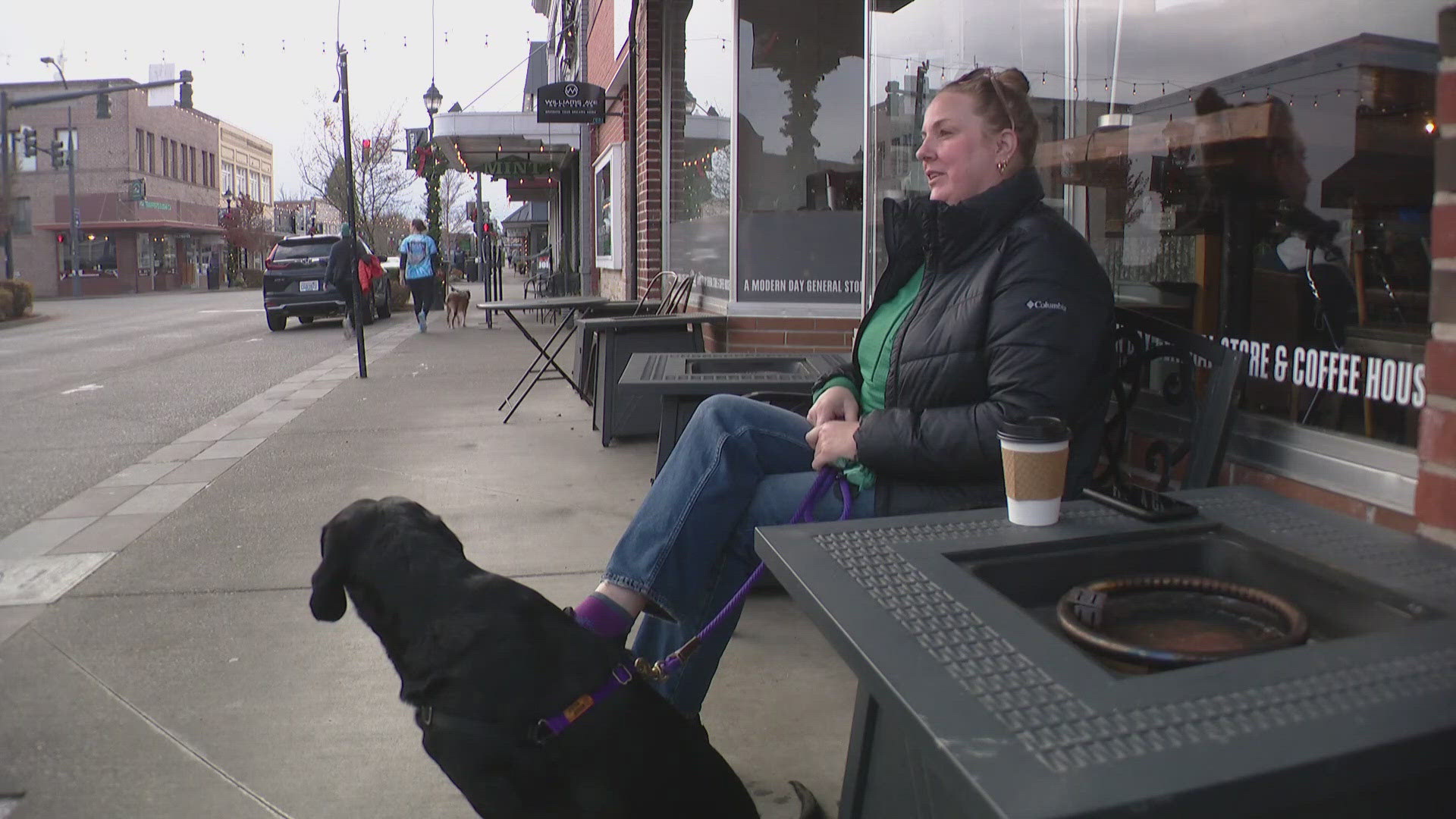WASHINGTON, USA — Power has been restored to over 300,000 people two days after a windstorm swept western Washington, killing two people and leaving hundreds of thousands in the dark.
At its peak, more than 600,000 people were without power amid a windstorm that struck Tuesday night and lasted into Wednesday morning.
The damage is the result of a bomb cyclone that formed off of Washington's coast.
Puget Sound Energy still has the most customers in the dark, with more than 200,000 households without power as of Thursday afternoon. The Snohomish Public Utilities District reports more than 15,000 customers without power, and Seattle City Light reports more than 5,000 customers in the dark.
Puget Sound Energy warned that the magnitude of the storm and the damages could mean that some people will go without power for multiple days. They "encourage customers to make alternate plans as we work to assess the situation and restore power." The company said the biggest impact is in King County.
PSE reported "extensive numbers" of downed power lines and reminded customers to never touch or go within 30 feet of a downed line, because they may still be energized. Field crews are also navigating downed trees, which is restricting their access to some areas.
Additional power crews from outside the Puget Sound area are being brought in to help restore power.
Seattle City Light also advised that there may be delays in restoring power as crews navigate potentially dangerous situations, including high wind speeds, downed power lines and fallen trees. The company said crews will continue to work around the clock until power is restored to all customers.
During a power outage, the Washington State Department of Health recommends the following:
- Turn off lights and electrical appliances except for the refrigerator and freezer.
- Even if it is dark, turn light switches and buttons on lamps or appliances to the “off” position.
- Unplug computers and other sensitive equipment to protect them from possible surges when the power is restored.
- Leave one lamp on so you will know when power is restored. Wait at least 15 minutes after power is restored before turning on other appliances.
- Conserve water, especially if you use well water.
- Never use gas ovens, gas ranges, barbecues or portable or propane heaters for indoor heating—they use oxygen and create carbon monoxide that can cause suffocation.
- Candles can cause a fire. It's far better to use battery-operated flashlights or glow sticks for lighting.
- Using a kerosene heater, gas lantern or stove inside the house can be dangerous. Maintain proper ventilation at all times to avoid a build up of toxic fumes, and be sure to have a carbon monoxide detector.
- Stay away from downed power lines and sagging trees with broken limbs.
PSE said this storm caused one of the largest outages in recent years. It was on par with two storms in the last 20 years. In January 2012, a storm caused an eight-day outage that impacted 476,000 people, and in December 2006, 700,000 people were out of power for multiple days.

